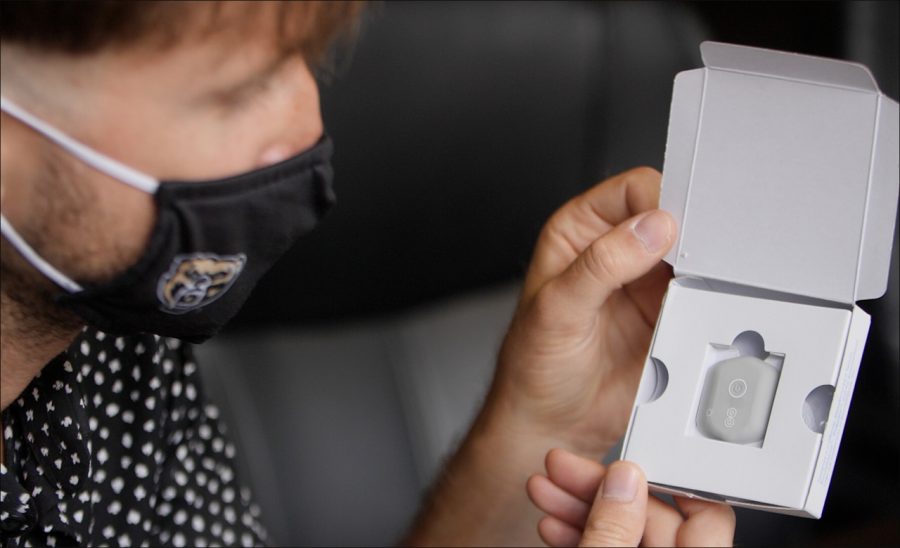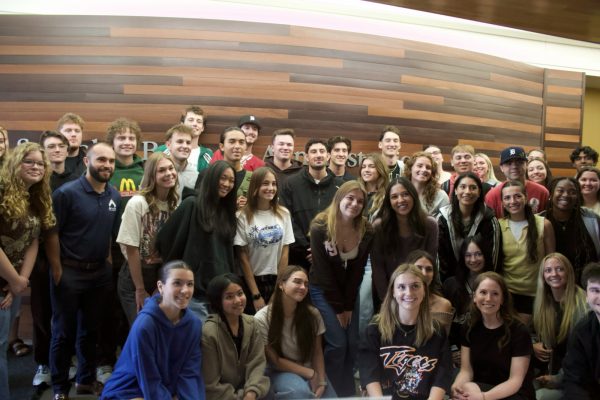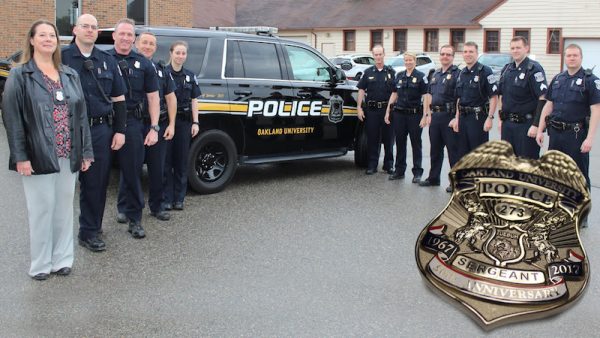BioButton still viable option for COVID-19 detection on campus
Photo Courtesy of Oakland University
The BioButton is available for free for anyone with a GrizzID.
On Nov. 20, 2020, BioIntelliSense’s BioButton was made available to Oakland University students in an effort to combat COVID-19 outbreaks on campus and provide early symptom detection technology.
The BioButton, which received some negative feedback early on due to privacy concerns, monitors only skin temperature, respiratory rate and heart rate at rest. It is also utilized for contact tracing, but does not track its wearer’s whereabouts — it only alerts them they were in contact with a COVID-19 positive individual.
As campus heads into summer and fall 2021 semesters, the BioButton (free to all OU students) remains a viable option to keep the campus community safe and healthy.
“I know people feel like we’re beginning to see the light at the end of the tunnel of this pandemic, but now is no time to let our guard down,” Vice President for Research at OU, David Stone, said. “Infection rates in [Michigan] are still high, and the new variants have introduced unknowns that complicate the path to the end of the pandemic. Wearing the BioButton remains a good way to track your own health and to protect your family, your classmates and your community from the risk of a localized outbreak of the disease.”
In July 2020, news of the BioButton being mandatory on campus in a housing update alerted students. A petition was created to make the button optional, which garnered around 2,500 signatures and received national attention, most notably in the New York Times.
OU senior and the petition’s creator, Tyler Dixon, mentioned the petition’s ultimate goal was to make the BioButton optional for students and staff.
“I don’t have as much of an issue with wearing it as I do mandating it for students,” Dixon said. “My whole thing was less about wearing the BioButton and more about forcing people to [wear it]. The more I sit back and think about the BioButton, the more I realize that my issues stemmed more from how OU handled it as opposed to the actual device itself.”
Dixon said he doesn’t regret creating his petition, because it created a dialogue after the BioButton was deemed mandatory on OU’s website in summer 2020.
“Whether or not [OU] meant to, it came across like they were trying to hide things from us and I don’t know if I would necessarily change my petition, but I just wish it was never required,” Dixon said.
The BioButton is an optional device and although encouraged and advocated for by the university, students and staff can opt out of wearing it.
OU Athletics Director, Steve Waterfield, mentioned the release of the BioButton coincided with a drop in COVID-19 cases — as of now, roughly half of student athletes and staff wear a BioButton, about 200 people. Waterfield wears a BioButton, as well.
“When we started to roll [the BioButton] out, our [COVID-19] numbers started to trickle down and become lower,” Waterfield said. “Since we’ve been around for winter semester, the numbers have been trending to where we want, which is minimal. So anecdotally, I would say [yes, the BioButton has worked].”
Waterfield mentioned the contact tracing ability of the BioButton is especially helpful.
“Where you see the large-scale issues is when people have to quarantine through contact tracing,” Waterfield said. “Wearing it allowed folks to do as much as they could to try and stay apart knowing in some cases it’s impossible. [Nobody] knows where you are, it’s more ‘are you close to someone that has a BioButton.’ It isn’t a question of where you should or shouldn’t have been.”
BioButton technology remains available to any and all students who want it — another health measure taken by the university to keep campus safe in light of COVID-19.
On-campus distribution is available Monday through Friday from 9 a.m.- 4 p.m. in the Oakland Center, Hillcrest and Vandenberg Halls and from 11 a.m.- 7 p.m. in the Recreation Center.









